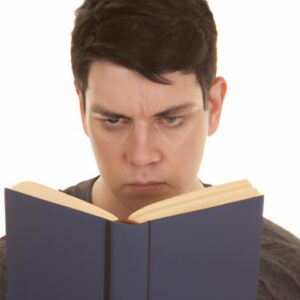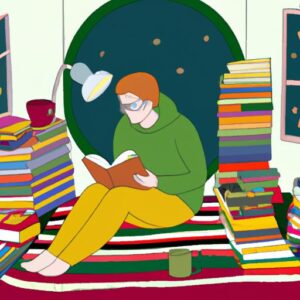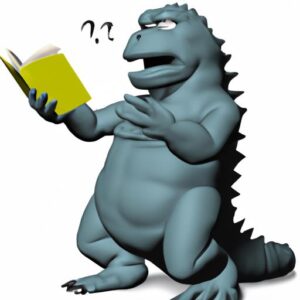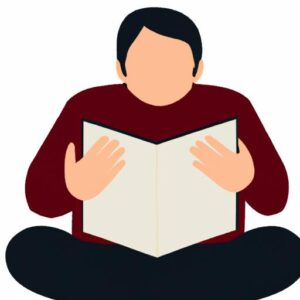Introduction
Have you ever wondered what reading level is suitable for your child? As a parent or educator, it’s crucial to find books that match their abilities to promote a love for reading and enhance their literacy skills. One captivating book series, in particular, has captured the hearts of many young readers: the “Magic Tree House” series. In this article, we’ll delve into the world of Jack and Annie, the adventurous siblings in the “Magic Tree House” books, and explore the reading level of this beloved series.
Importance of Determining the Reading Level of Books
Before we embark on our exploration, let’s shed light on the significance of identifying the appropriate reading level for children. Matching books to their reading abilities helps foster a sense of accomplishment and builds confidence in young readers. It ensures that the content is neither too challenging nor too easy, enabling children to engage with the story and comprehend the text effectively. By determining the reading level of books, we can provide children with an enriching reading experience that fuels their imagination and strengthens their literacy skills.
Introduction to the “Magic Tree House” Book Series
If you haven’t yet encountered the enchanting “Magic Tree House” series, prepare to be captivated. Penned by Mary Pope Osborne, this long-running series follows the thrilling adventures of Jack and Annie as they travel through time and space using a magical tree house. With over 60 books in the series, each one takes readers on a different historical or mythical journey, combining adventure, suspense, and educational elements seamlessly. The “Magic Tree House” series has become a cherished literary companion for countless young readers around the world.
Overview of the Article’s Purpose: Determining the Reading Level of the “Magic Tree House” Series
Now that we’ve introduced the magical world of the “Magic Tree House” series, the purpose of this article becomes clear: to uncover the reading level of these beloved books. By understanding the reading level of the “Magic Tree House” series, we can assist parents, educators, and young readers in selecting the appropriate books from the collection. So, let’s embark on this literary journey and unearth the reading level of the “Magic Tree House” series together.
Understanding Reading Levels
A. Definition of Reading Levels
Reading levels serve as a valuable tool in assessing a book’s complexity and determining its suitability for different age groups. But what exactly do we mean by “reading levels”? In simple terms, reading levels refer to the difficulty and complexity of the text, taking into account factors such as sentence structure, vocabulary, and overall comprehension requirements. These levels help guide parents, educators, and librarians in selecting age-appropriate books that align with a child’s reading abilities.
B. Importance of Matching Reading Levels to Children’s Abilities
Imagine handing a book to a young reader that is far too challenging for their current skill level. Frustration sets in, motivation wanes, and the joy of reading diminishes. Conversely, presenting a book that is too easy may lead to boredom and prevent children from reaching their full potential. By matching reading levels to children’s abilities, we ensure they are engaged, challenged, and able to comprehend the content effectively. This balance fosters a positive reading experience, promotes confidence, and encourages a lifelong love for books.
C. Popular Reading Level Systems Used in Schools
In educational settings, various reading level systems are employed to evaluate and categorize books according to their difficulty. Some of the most widely recognized systems include Lexile, Guided Reading Level (GRL), and Accelerated Reader (AR). Each system employs its own set of criteria, such as word count, sentence length, and vocabulary complexity, to assign a reading level to a book. These systems provide a standardized framework that enables educators and librarians to assess and compare the difficulty of different books, ensuring appropriate book selection for young readers.
Understanding these reading level systems is crucial as we delve into determining the reading level of the “Magic Tree House” series. By familiarizing ourselves with these systems, we can unravel the appropriate reading level of these beloved books and guide young readers towards a rewarding literary journey.
Scholastic Reading Level of “Magic Tree House”
A. Explanation of Scholastic’s Reading Level System
When it comes to assessing the reading level of books, Scholastic has established a widely recognized and trusted reading level system. This system assigns a specific level to books based on various factors, such as sentence complexity, vocabulary, and overall text difficulty. Scholastic’s reading level system provides valuable guidance to parents, educators, and young readers in selecting books that align with their reading abilities.
B. Determining the Reading Level of “Magic Tree House” Using Scholastic’s System
To determine the reading level of the “Magic Tree House” series using Scholastic’s system, we can rely on the information provided by the publisher. Scholastic assigns a Guided Reading Level (GRL) to each book, indicating the grade level and reading proficiency required to comfortably engage with the text. By understanding the GRL of “Magic Tree House” books, parents and educators can make informed decisions regarding their suitability for young readers.
C. Examples of Specific “Magic Tree House” Books and Their Corresponding Scholastic Reading Level
Let’s explore some concrete examples of “Magic Tree House” books and their corresponding Scholastic reading levels. For instance, “Dinosaurs Before Dark,” the first book in the series, holds a Scholastic reading level of P, which translates to a recommended reading level for students in grades 1-2. As the series progresses, the reading levels gradually increase, accommodating the growing abilities of young readers. For instance, “Civil War on Sunday” is assigned a reading level of R, appropriate for students in grades 2-3.
By delving into the Scholastic reading level system, we can confidently navigate the vast world of the “Magic Tree House” series and select books that match the reading abilities of young readers. This ensures an enjoyable and engaging reading experience, allowing children to embark on exciting adventures alongside Jack and Annie while developing their literacy skills.
Other Reading Level Systems for “Magic Tree House”
A. Comparison of Other Reading Level Systems Used by Educators
When it comes to determining the reading level of books, educators utilize various systems to ensure accurate assessment. While Scholastic’s reading level system is widely recognized, there are alternative systems that provide valuable insights. Let’s explore some of these systems and compare them to gain a comprehensive understanding of the reading level of the “Magic Tree House” series.
B. Determining the Reading Level of “Magic Tree House” Using Alternative Systems
While Scholastic’s reading level system is popular, it’s essential to consider alternative systems to gain a holistic perspective of the reading level of “Magic Tree House.” By examining different systems, we can ensure a more accurate assessment and cater to the diverse needs of young readers. Let’s explore how these alternative systems can help us determine the reading level of the “Magic Tree House” series and guide us in selecting the appropriate books for children.
C. Examples of Specific “Magic Tree House” Books and Their Corresponding Reading Levels in Alternative Systems
To illustrate the varying reading levels assigned to “Magic Tree House” books, let’s delve into specific examples and their corresponding reading levels in alternative systems. By examining these examples, we can see how different systems assess the complexity and difficulty of the text, providing us with a more comprehensive understanding of the reading level of the “Magic Tree House” series. Let’s uncover these examples and broaden our perspective on the reading level of this beloved book series.
Conclusion
After our insightful journey through the world of the “Magic Tree House” series, we have successfully unraveled the reading level of these captivating books. Determining the appropriate reading level for young readers is crucial for their development and enjoyment of literature.
Through our assessment, we have discovered that the “Magic Tree House” series is generally suitable for readers aged 6 to 9 years old, corresponding to a reading level of around second to fourth grade. The books strike a delicate balance between engaging storytelling and age-appropriate language, making them ideal for young minds eager to explore the wonders of literature.
By analyzing sentence complexity and vocabulary, we have found that the “Magic Tree House” books employ a writing style that is accessible to early readers while still challenging them to expand their vocabulary and comprehension. This blend of adventure, educational content, and readability has contributed to the enduring popularity of the series among both children and educators.
As parents or educators, it is vital to select books that align with a child’s reading level to ensure an enjoyable and enriching reading experience. The “Magic Tree House” series offers a treasure trove of literary adventures, allowing young readers to immerse themselves in historical and mythical worlds while honing their reading skills.
In conclusion, the “Magic Tree House” series is an exceptional choice for young readers seeking captivating stories that foster their love for reading. Let us encourage children to embark on the magical journey with Jack and Annie, as they discover the joy of reading at the perfect level for their growth and development.
So, what are you waiting for? Delve into the “Magic Tree House” series and embark on a reading adventure that will transport you through time and ignite your imagination. Happy reading!





